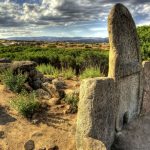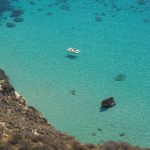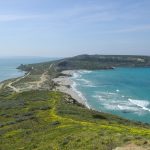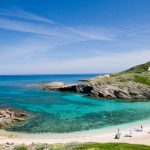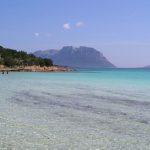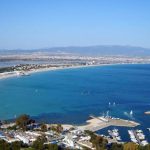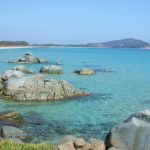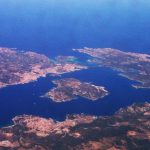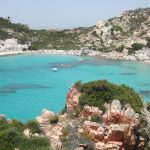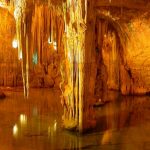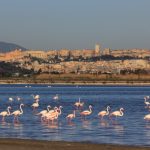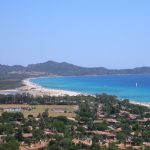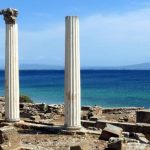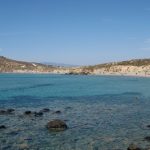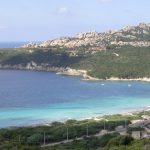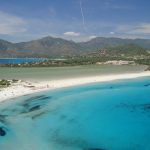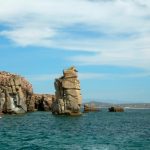Isle of great charm, Sardinia offers scenarios of great beauty and variety: from the beaches with crystal sea water in Costa Smeralda, to the picturesque villages and islands of the South.
Almost everywhere in Sardinia it is possible to see the archaeological finds of “Giants tombs” and of Nuraghi, the megalithic constructions typical of Sardinia dating back over 1000 years BC. Some of them are well preserved and open to visitors. Experts are still discussing about their origin. Many finds are kept in the National Archaeological Museum of Cagliari.
The North of Sardinia is a land of natural beauty. The northernmost side of Gallura has wonderful beaches for diving, such as those of Capo Testa and Santa Reparata, and also villages of great charm as Santa Teresa di Gallura or archaeological sites such as Li Lolghi and Li Muri necropolis.
To the northeast, over Olbia, you meet the famous Costa Smeralda, with bays, small beaches and popular locations so often mentioned in VIP gossip magazines: Porto Cervo and Porto Rotondo.
Further north lies the archipelago of La Maddalena with its marine park and the island of Caprera where it is possible to visit the home of Giuseppe Garibaldi.
Alghero, in the northwestern side of the island, is the only Catalan city of Italy and even today the road signs are written in both languages. Alghero is also famous for its red coral. Near Alghero there are the beautiful caves of Neptune, reachable by boat.
To enjoy nature and see beautiful sea views, it’s perfect to take the road that leads from Alghero to Bosa, the small town with a navigable river, the river Temo.
In the South of Sardinia the white beaches of Notteri are a paradise for surfers while Costa Rei is recommended for snorkeling.
The Monte Linas-Oridda-Margani is a place full of waterfalls and natural caves, and it is populated by many species of rapacious birds.
Sardinia is also a land of old mines, open now to tourists, as the mines of Iglesias, San Giovanni, Masua and Monteponi, all of them in the South of Sardinia.
The historic center of Cagliari retains traces of Phoenician and Roman dominations.
Near Cabras it is possible to visit the ruins of Tharros, ancient Phoenician village (7th century BC) then inhabited by the Romans. The city lies on the Sinis Peninsula overlooking the sea.
In the province of Cagliari there are the lakes in which pink flamingos live.
The ancient Phoenician harbor of Sulcis was based In Sant’Antioco island.
Carloforte, on the San Pietro island, is a very very special village where Ligurian dialect is the “official language”. This happens because in 1738 the king Charles Emmanuel III gave it to farmers and fishermen living in Tabarka (Tunisia) in order to escape from the constant difficulties with local rais.
Even today the people of Carlforte are called “tabarchini”.
NATIONAL PARKS IN SARDINIA:
The National Parks of Italy are natural areas of land, sea, river, or lake whose value is a well-preserved ecosystem. Thus their nature, together with their cultural, educational, or recreational values are protected by the Italian Government in order to be preserved for the future. Currently, in Italy there are 25 National Parks, covering an area of over 1,500,000 hectares (15,000 km²), about 6% of the Italian territory.
La Maddalena National Park
Asinara National Park
Orosei and Gennargentu Gulf National Park
REGIONAL PARKS IN SARDINIA:
The Italian Regional Parks are land, river, lake, and sea areas facing the coast. Their value is being like a system including the nature of the places, art, and cultural traditions of the local inhabitants. The Italian Regional Parks are more than 150 and cover an area of approximately 1million and 500,000 hectares.
Porto Conte Regional Park
Molentargius-Saline Regional Park
Gutturu Mannu Regional Park
Tepilora, Sant’Anna and Rio Posada Regional Park
Monte Arci Regional Park
MARINE PROTECTED AREAS IN SARDINIA:
Marine Protected Areas or Marine Reserves are stretches of the sea where sport fishing, professional fishing, scuba diving, the entry with motorboats, motorcycles, cars are prohibited or limited. And the abandonment of waste on the beaches is severely punished. The typology of these areas varies according to the protection constraints. There are more than 25 Italian Marine Protected Areas, covering an area of approximately 222,442 hectares of sea.
Capo Carbonara
Isola dell’Asinara
Penisola del Sinis – Isola Mal di Ventre
Tavolara – Punta Coda Cavallo
UNESCO GLOBAL GEOPARKS IN SARDINIA:
Unesco global Geoparks are Natural areas of particular geo-mining interest representing the 4,600 million-year history of Planet Earth and the geological events that have shaped it. Geoparks’ mission is to increase knowledge about the value of geo-diversity and to promote the conservation, tourism, and the popularization of the geological heritage. More than 100 Geoparks (Global Geoparks) are recognized worldwide in 33 countries, of which 69 in Europe. In Italy, there are 10 Unesco Geoparks.
Parco Geominerario Storico e Ambientale della Sardegna
WWF NATURE RESERVES IN SARDINIA:
The WWF Oases are the first Italian network of protected areas managed by a private association. WWF activities in the Oases range from ecotourism to nature holidays, education, training, and environmental information programs. There are more than 100 WWF Oases in Italy, covering more than 30,000 hectares of land in 18 regions. They are visited by more than 500,000 people a year.
In the Province of Cagliari:
Monte Arcosu
In the Province of Medio-Campidano:
Scivu
In the Province of Sassari:
Steppe Sarde
BLUE FLAGS IN SARDINIA:
Blue Flag is an International recognition reserved for lakes or seaside tourist resorts that comply with sustainable land management criteria. The Blue Flag is awarded annually by the non-governmental and non-profit organization “Foundation for Environmental Education” (FEE). Only the localities whose waters have been excellent in the previous season can apply. In 2020, more than 195 municipalities and over 407 Italian beaches have been awarded as “Blue Flag”.
In the Province of Cagliari:
Quartu S. Elena – Poetto, Mare Pintau
Teulada – portu Tramatzu, Sabbie Bianche, Tuerredda
In the Province of Olbia Tempio:
Badesi – Li Junchi
La Maddalena – Caprera: Due mari, Caprera: Relitto, La Maddalena: Spalmatore, porto Lungo
Palau – Palau Vecchio, l’Isuledda (Porto Pollo), la Sciumara, Foce Fiume Liscia
Santa Teresa Gallura – Rena Bianca, Rena ponente (loc. Capo Testa), zia Culumba (loc. Capo
Testa, Rena di Levante)
In the Province of Sassari:
Castelsardo – Madonnina / Stella Maris, Sacro Cuore/ Ampurias
Sassari – Porto Ferro
Sorso – Marina di Sorso
In other Provinces:
Oristano – Torregrande (OR)
Tortoli – Lido di Cea, lido di Orrì, Muxì (Il Golfetto), Orrì Foxilioni, ponente (nota “la Capannina”),
porto Frailis (OG)
ORANGE FLAGS IN SARDINIA:
Orange Flag is a tourism-environmental quality mark awarded by the Italian Touring Club to small towns in the Italian inland (maximum 15,000 inhabitants) which stand out for their quality hospitality. The Orange Flag has been awarded to over 200 Italian municipalities.
In the Province of Nuoro:
Gavoi
Oliena
In other Provinces:
Aggius (OT)
Laconi (OR)
Sardara (VS)

